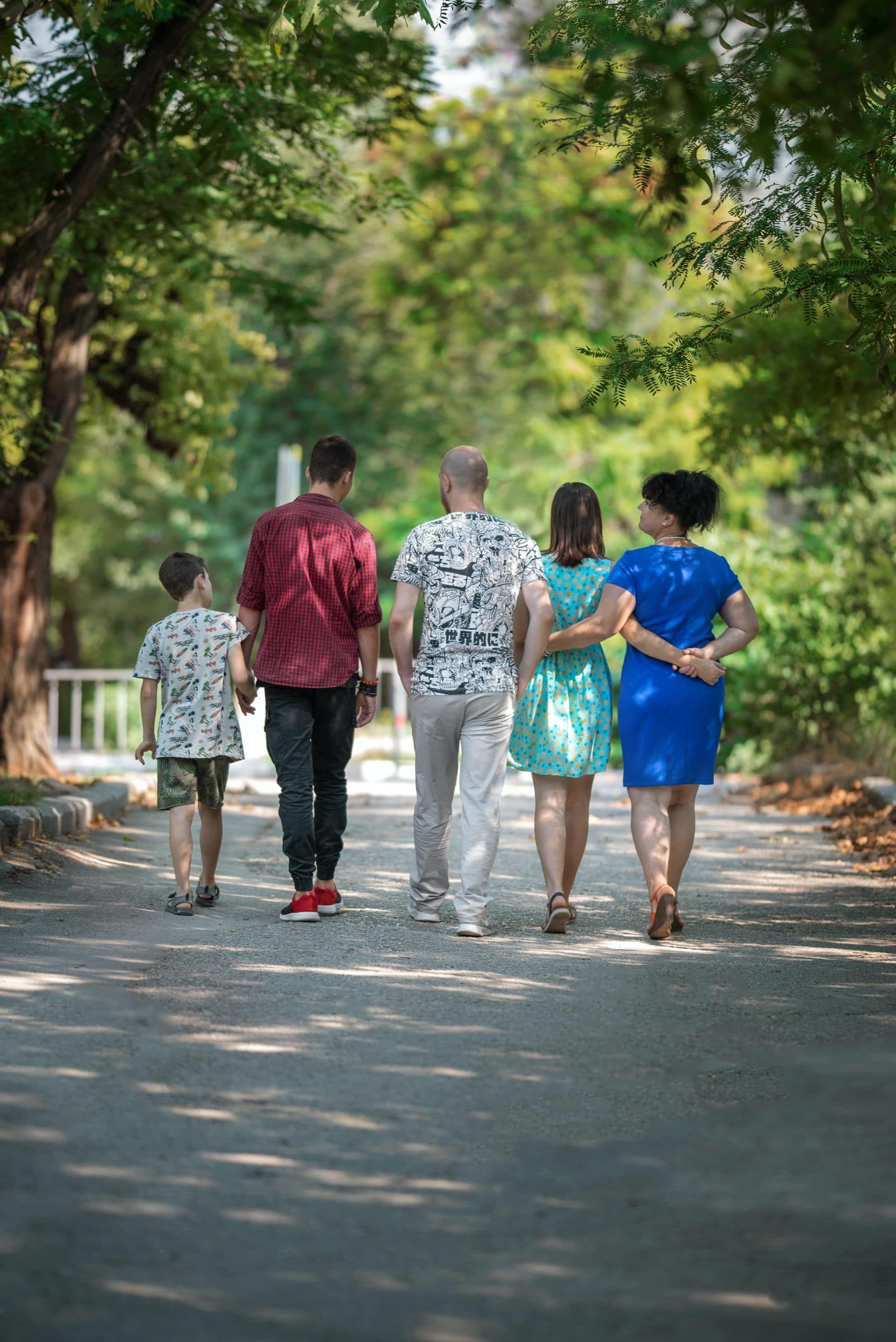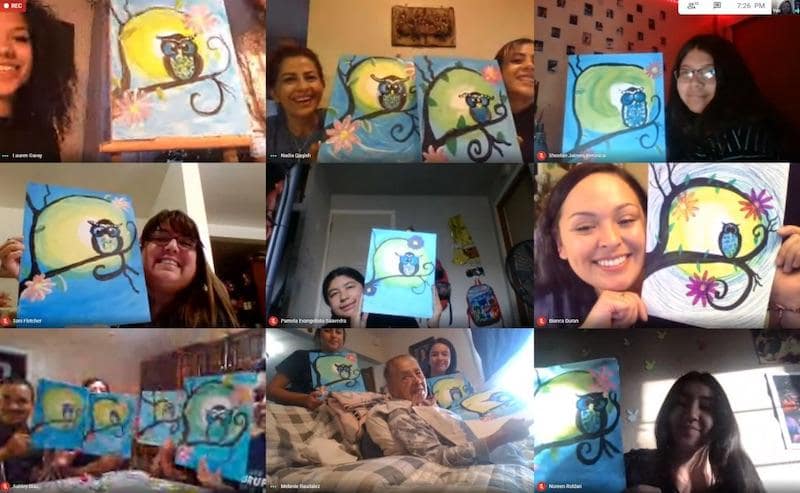
25 Sep Why We Still Need the Village – Strengthening Support Systems for Our Children
The famous African proverb, “it takes a village to raise a child,” should ring more true to parents and families today than ever before. Juggling parental responsibilities while maintaining a career (especially those parents who lead single-family households) is not an easy thing to do. Not to mention the stress and hardships many American children are already facing — from extensive social media use to disconnectedness and isolation, to other difficulties at home. And this is pre-pandemic.
Today, more common than this stress of life is the un-comfortability to ask for help. For some, just the idea of getting parenting help from our friends or community often feels like we’re doing something wrong. If we’re the ones reaching out to ask if a friend needs help, it can sometimes feel like we’re stepping on their toes, or we may fear we’ll come off as telling them how to parent. But what’s with that stigma? What happened to the village mentality?
Supporting Ourselves and Our Kids
Why we still need the village
We know how critical a parental figure is to the development of a child. Children, especially girls, who grow up with an absent father, are more likely to be subjected to higher poverty rates, experiment with drugs, and experience teen pregnancy. With the compounded problem of a global pandemic, support from community members, teachers, friends, and family is critical.
Kids today experience less connection, more isolation and anxiety, and even depression. And COVID-19 has only exacerbated these feelings.
Not to mention, there is an entire generation of children who now can say they grew up with social media. While every child is different, as a whole, this generation is starting from a level much less connected to self and much more used to comparing themselves to others than any generation before them.
Alexandra Hamlet, a clinical psychologist of the Child Mind Institute, says, “the less you are connected with human beings in a deep, empathic way, the less you’re getting the benefits of a social interaction,” and “the more superficial it is, the less likely it’s going to cause you to feel connected, which is something we all need.”
This information age has brought with it starvation for connection.
But of course, many households go through much worse than the overuse of social media. What about children who are at risk of more severe hardships like trauma or incarceration?
Children today are experiencing higher levels of anxiety, depression, and even trauma than ever before. Thirty-five million of the United States’ children have experienced one or more severe types of trauma. That’s about half.
What are we doing to support them because many of these children aren’t supported at home? In the U.S., approximately 2,968,000 youth under the age of 18 do not live with either parent in the home and 1.7 million children have a parent in prison. This is why the village is still so important.
In her Tedx Talk, Natasha Babul, gives us insight into her past and her 9.5 ACE (Adverse Childhood Experience) score. Thanks to a team of teachers and strangers, Natasha’s village of supporters helped her overcome struggles and not be defined by her circumstances.
It takes a village to raise a child: Natasha Babul
When a community of healthy adults supports a child, they build a robust social and emotional support system around that child. The child grows up with and becomes accustomed to healthy connections. Empathy and resilience are natural byproducts, and these two protective factors can decrease many other risk factors that could potentially come into play in the child’s life.
Schools make up a considerable part of the village.
Our kids spend the majority of their time there, so it only makes sense that teachers and district officials provide the social and emotional support necessary to support them.
Reach out to and for others
Build your village
For kids, healthy relationships with adults build trust in others. These relationships also build confidence in themselves as people also depend on them.
If you’re a parent, do you have a strong village that surrounds you and your children?
If you’re a teacher, do you feel your school has a strong social-emotional learning foundation that properly supports you and your students?
And if you’re a student looking for more support or a friendly community member who believes a child needs more help, how are you connecting to the right resources?
Finding your village
Reach out to your school community and see what kind of support or parental engagement activities are available.
Reach out to friends you trust, and don’t be ashamed to ask for help once in a while. While this may be more of a challenge now during COVID, even asking for advice from another person could relieve some stress.
If you’re hoping to give support to another parent or friend, offer your help in a non-invasive way. If you’re worried your friend might take it the wrong way, frame it in a way that makes them feel like you’re helping each other.
Of course, when it becomes safer to be in the same room as others, offer to watch a friend’s children for a period of time. Some time alone to take care of their personal needs can do wonders to support the family.
Strengthen Your Support System
Participate in family bonding activities
To do our part in the village, we promote an Our P’Art of Parenthood program to strengthen child-caregiver relationships by encouraging engaged parent-figures and exemplifying new possibilities through art and education.
Children and their parents, or guardian, will sit together and be led in a guided painting project. The artists will facilitate discussions surrounding healthy relationships and ways to improve them. They will utilize eco-friendly materials, educating those in attendance about what it means to be an environmental advocate. Community members will present unique, nontraditional career opportunities for the teenage population and provide resources for personal and professional achievement.
While it is open to all, it is specifically designed for youth experiencing adverse childhood experiences (ACEs), and those at risk for or currently impacted by the criminal justice system, including those at risk or experiencing suspension, expulsion, or chronic absenteeism. We have one coming up in November for our Riverside County communities. If you’re a family living in Riverside, or your children attend Riverside schools, we’d love to see you! You can grab your tickets here.

Still, it is a program available to anyone interested in supporting groups who are often marginalized, giving them access to arts and to educate youth and their support systems on the importance of critical relationships while also strengthening this bond in these formative years. Reach out to us for more information on how to bring this program to your community.
We’re aware that more than half of children in the U.S. live in nontraditional families, so as an organization, we support all child-caregiver relationships with these fun and engaging bonding activities.
UP NEXT
What is Social-Emotional Learning?
What is it and why is it so important to a child’s future? Part of building a supportive and loving village around your child means knowing what’s available to do just that. Our children spend a majority of their time at school, or in this day and age, at least online doing school work.
Teachers and school districts who employ SEL go beyond strategies for instruction, but have developed a mindset that promotes the social and emotional wellbeing of your child in everything that they do. Our next article goes into the fundamentals of why social-emotional learning matters.


